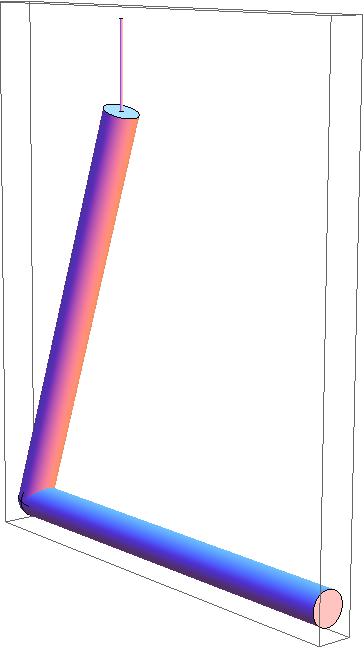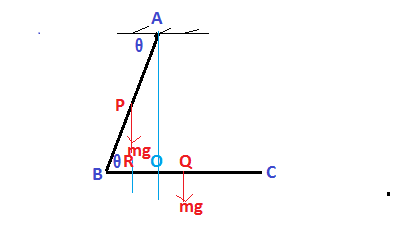A rigid body in the shape of a 'V' has two equal arms made of uniform rods. What must be the angle between the two rods so that when the body is suspended from one end, the other end is horizontal?
Thank you!
Thank you!
2 Answers
Let two uniform rods each of mass m and length l joined at angle
Let the midpoint of AB be P and that of BC be Q.The vertical line drawn through the point of suspension A intersects BC rod at O.The weight of AB part
The perpendicular distannce of the weight acting through P from O is
Again the perpendicular distance of the weight acting through Q from O is
So at equlibrium of two weigts
Explanation:
Let
The rigid body baricenter is found as the baricenter of the rod's baricenters. So
Calling
This baricenter pertains to the vertical issuing from the hanging point.
Supposing that the rigid body is suspended by the point
but
but
but
then
so




